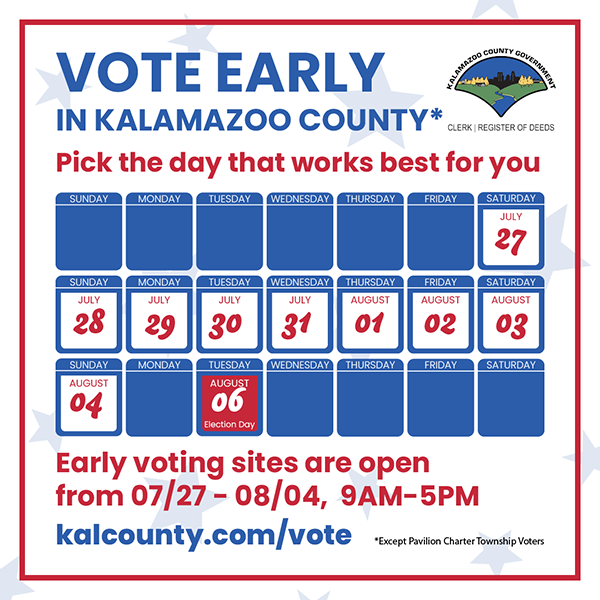 Watch for your chance to see some of these projects in our area. And consider traveling to experience these projects around Michigan.
Watch for your chance to see some of these projects in our area. And consider traveling to experience these projects around Michigan.
Dr. Michelle Johnson has been very busy working here in Kalamazoo as historian for Exhibits for a New Century. Over the past two years she developed a network of cultural and historically based researchers across our state, focusing on Black people in Michigan between 1815 and 1915. Dr. Johnson worked with researchers and historians to create a database to collect and share data, to increase their ability to tell stories through community projects. Three broad categories resulting from this networking:
A movement of people evolved, invested in shaping statewide history of Black people in Michigan, and they found inspiration to locate and tell stories about a diverse historical community. In Saginaw, Sam Fitzpatrick of the Castle Museum, said this project “expanded his network” so he could “use his skills and interest in history… knowing there are others like myself who want to bring local history into the light.” In Detroit, David Head, Project Director for Tracking Advancement: 100 Years of Progress? credits this project with establishing solid relationships among broad-based partners. In Niles, Christina Arsenau said that Johnson “inspired the City of Niles to learn about the history of its African-American community.”
Many scholars increased their awareness and use of primary sources to research and create programs and add to the Michigan state database. In Kalamazoo, Controlling the Narrative, a Society For History And Racial Equity (SHARE) project, received a Michigan Humanities Council Heritage Grant for their multiracial workshops to build a transformative team of people of color and white allies in the struggle against racism.
The Pension Records Project yielded endless stories and contributed to projects like Dr. Johnson’s recent lecture on black Michigan practitioners and recipients of Civil War medical experiences for the Western Michigan University Homer Stryker M.D. School of Medicine. Partners like Evey Milstein, reported significant insight on using census and city directories to study Detroit African American women from Canada and how they lived. The Michigan Manual of Freedmen’s Progress became a go-to document to tell the Black Michigan story. Michigan Technological University launched Black Voices in the Copper Country ; MTU Archives and Copper Country Historical Collections won The Historical Society of Michigan’s 2016 Special Programs Award for this project. Local programs throughout Michigan are integrating this significant time period and its people into current conversations about race, culture and authenticity. In the last two years, four project partners generated Michigan grant-funded projects that built digital web and social media presences in Kalamazoo, Detroit, Niles, and Houghton.
The digital coordinator of Tracking Advancement developed a website, mhchtap.com , that provides descendants forms to use and includes links to grant community partners, upcoming events, etc.
Resulting from this project, partners plan to host presentations on Pioneers in Medicine and Michigan Manual Descendants, The Emancipation Proclamation, 13th Amendment and returning Colored Civil War Veterans, Socio-cultural immigration patterns of early African Americans settlements in Detroit, Fort Wayne African American History and Progress of Inequality: Emancipation to the Millennium, and a workshop on how to use My Maps Google software to study settlement patterns.
The Niles History Center spearheaded a collaborative project called Profiles and Portraits: African-Americans in Niles’ Past, Present and Future. The largely untold story of African-Americans who arrived as part of multiple networks such as the Underground Railroad and settled here, has lessons with tremendous potential to address issues facing the community of Niles. The support systems, family structures and community dynamics of Niles led to the establishment of black-owned businesses and a “corridor” which included a school, church and Michigan’s first African-American Masonic lodge. To discover, analyze and disseminate this history so that it can be applied to the present, three products were produced: a digital resource database, a local history exhibit and a walking tour.
These findings affect our understanding of how Michigan racial politics affected the lives of Black people from 1815-1915. This project found and strengthened many stories by retrieving and collecting primary sources such as pension records, newspapers, photographs, letters, wills, and descendants’ stories. So many women and men across the state share ancestry with these remarkable people. And many are venturing to share and learn more.
Michelle S. Johnson, PhD is a public scholar in the fields of African American history, literature and cultural production. She taught Liberal Studies and African American Studies at GVSU, American Thought and Culture and History at MSU and English at SVSU and University of Wisconsin-Milwaukee. Johnson holds a B.A. in Humanities from Michigan State University and a PhD in American Culture from the University of Michigan. She worked as Michigan Freedom Trail coordinator for the State of Michigan and is co-founder and Executive Director of Fire Historical and Cultural Arts Collaborative in Kalamazoo. See her work at www.michellesjohnson.com
– Dr. Johnson’s report was summarized by River Artz-Iffland, Anti-Racism Task Force member
 ISAAC
ISAAC





 Ed Genesis is an artist, poet, musician, organizer, entrepreneur, and community leader. Born and raised in Gary, Indiana and moved to Kalamazoo, Michigan permanently in his early 20’s, his love of art/music, his passion for his people and community, and his gift of creativity are evident in all areas of his work. In October 2018 Ed Genesis released a song to accompany the campaign he was working on around school push out, entitled Junior High, which was distributed nationwide including on his own iHeart radio station, Spotify, and iTunes.
Ed Genesis is an artist, poet, musician, organizer, entrepreneur, and community leader. Born and raised in Gary, Indiana and moved to Kalamazoo, Michigan permanently in his early 20’s, his love of art/music, his passion for his people and community, and his gift of creativity are evident in all areas of his work. In October 2018 Ed Genesis released a song to accompany the campaign he was working on around school push out, entitled Junior High, which was distributed nationwide including on his own iHeart radio station, Spotify, and iTunes.